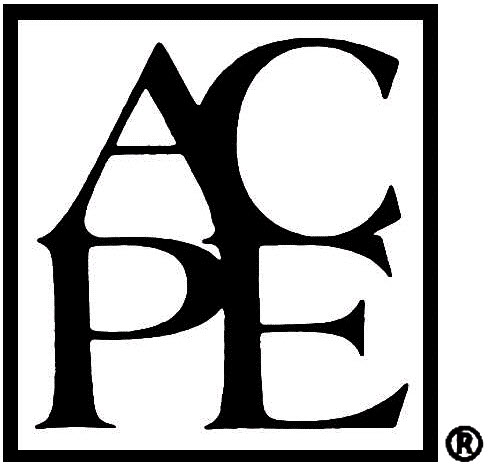Head Lice: Solving 'Nit-Picky' Pediculus Capitis
Disease State Management/Drug Therapy CE for Pharmacists
Are you a Pharmacy Tech? Check out the Pharmacy Tech version of this course.
Want another way to take this test? Check out the video-based version of this course.
Course Summary
Infestation with head lice is a common problem. The stigma associated with head lice (pediculus humanus capitis) often results in significant social and financial burdens. Healthcare professionals often collaborate regarding head lice to educate the public, enhancing self-care opportunities and dispelling prevalent myths about head lice. Comprehensive training is essential to equip these professionals with the knowledge of proper diagnosis, prevention of misdiagnosis, and treatment protocols, which are vital for addressing patient needs and preventing re-infestation. The topic will discuss accurately differentiating head lice from other scalp conditions. Approaches to precise diagnosis and treatment will be discussed, and interprofessional team communication will be mentioned. This module will also cover diverse strategies for reassuring patients, mitigating resistance, and providing attendees with up-to-date information to combat head lice infestations effectively.
Identify and Dispel at least three common myths about head lice
Distinguish head lice from other scalp conditions
Summarize current head lice treatments
Formulate a collaborative multidisciplinary plan of care for a patient
Course Syllabus
I. Introduction
II. Prevalence of Head Louse Infestations
III. Myths, Barriers, And Complications Around Head Lice (Pediculus Humanus Capitis)
A. Myth: Poor Hygiene Causes Head Lice
B. Myth: Head Lice Can Jump or Fly
C. Myth: Pets Can Spread Head Lice
D. Myth: Only Children Get Head Lice
E. Barriers to Head Lice Treatment and Eradication
F. Complications from Head Lice Infestation
IV. Medical Team Approaches to Preventing Infestation
A. Prevention Through Education
B. Clinical Manifestations
C. Differential Diagnosis
V. Treatments for Head Lice Infestation
A. Patient Case Study
B. Follow-Up and Support
C. Unique Populations: Special Considerations
VI. Ways Medical Teams Can Work Together to Improve Outcomes for Head Lice Infestation Patients
A. Collaborative Education Programs
B. Integrated Treatment Protocols
C. Environmental Management
VII. Summary
- Read the course objectives and faculty planner disclosure
- Read the course material
- Complete the post-test with a minimum score of 70% and complete the course evaluation form.
- Results are automatically submitted to CPE Monitor
Faculty Planner Disclosure
The following individuals were involved in developing this activity: Anna S. Smith, MPH, BSN-RN, and Pamela Sardo, PharmD, BS. Anna S. Smith and Pamela Sardo have no conflicts of interest or financial relationships regarding the subject matter. There are no financial relationships or commercial or financial support relevant to this activity to report or disclose by RxCe.com or any of the individuals involved in the development of this activity.
Unlabeled Use Disclosures
The information provided in this course is general in nature and it is solely designed to provide participants with continuing education credit(s). This course and materials are not meant to substitute for the independent, professional judgment of any participant regarding that participant’s professional practice, including but not limited to patient assessment, diagnosis, treatment and/or health management. Medical and pharmacy practices, rules, and laws vary from state to state, and this course does not cover the laws of each state; therefore, participants must consult the laws of their state as they relate to their professional practice. Healthcare professionals, including pharmacists and pharmacy technicians, must consult with their employer, healthcare facility, hospital, or other organization, for guidelines, protocols, and procedures they are to follow. The information provided in this course does not replace those guidelines, protocols, and procedures but is for academic purposes only, and this course’s limited purpose is for the completion of continuing education credits. Participants are advised and acknowledge that information related to medications, their administration, dosing, contraindications, adverse reactions, interactions, warnings, precautions, or accepted uses are constantly changing, and any person taking this course understands that such person must make an independent review of medication information prior to any patient assessment, diagnosis, treatment and/or health management. Any discussion of off-label use of any medication, device, or procedure is informational only and such uses are not endorsed hereby. Nothing contained in this course represents the opinions, views, judgments, or conclusions of RxCe.com LLC. RxCe.com LLC is not liable or responsible to any person for any inaccuracy, error, or omission with respect to this course, or course material.
Computer Hardware/Software Requirements
Please ensure the device you plan to use meets these requirements and specifications:
- Operating System: Windows 7,8,10, or 11 /Mac OS X 10.9 or later/iOS/Android
- Supported Browsers: Microsoft Edge, Firefox, Google Chrome, Safari, Opera
- A connection to the internet
- For Live Webinars or Conferences: GoToWebinar application for iOS, Android, Mac, or PC. You cannot 'call into' a live conference.
Rating: 3.68/5
Based on the ratings of 126 customers
- Target Audience: Pharmacist
- Secondary Audiences: This educational activity is also for other healthcare professionals, such as nurses, physicians, or others who may be part of a healthcare team and may be interested in this educational topic. A healthcare team approach to patient care may be discussed in this activity, as applicable. No state board or professional organization has evaluated this activity to determine whether it meets the continuing education requirements of nurses, physicians, or other professions not listed under the “Target Audience” described above. Always verify with individual employers or supervisors whether they will accept this educational activity upon completion.
- Contact Hours: 2.0 (0.2 CEUs)
- Activity Release Date: 9/23/2024}
- Activity Expiration Date: 9/23/2027}
- Activity Type: Knowledge
- UAN: 0669-0000-24-131-H01-P
- Topic: Disease State Management/Drug Therapy
- CeBroker Number: 20-1252502
Faculty:

RxCe.com, LLC is accredited by the Accreditation Council for Pharmacy Education as a provider of continuing pharmacy education.